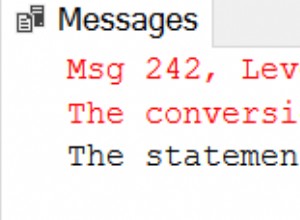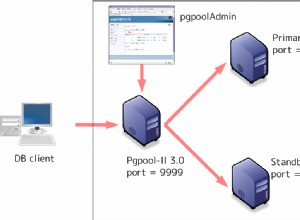(No soy un experto en este código fuente. Ha sido advertido).
La fuente está en línea aquí . He omitido los nombres de archivo; puede buscar los nombres de funciones para encontrar sus definiciones. Dejé los números de línea (generalmente) porque es más fácil cortar y pegar, y diferentes números de línea significarán que la fuente ha cambiado.
La historia corta es que algunos retornos "vacíos" son probablemente cstrings vacíos (cadenas vacías terminadas en nulo) y otros son punteros nulos.
Estas son las partes de la fuente que parecen relevantes.
00228 /*
00229 * void_out - output routine for pseudo-type VOID.
00230 *
00231 * We allow this so that "SELECT function_returning_void(...)" works.
00232 */
00233 Datum
00234 void_out(PG_FUNCTION_ARGS)
00235 {
00236 PG_RETURN_CSTRING(pstrdup(""));
00237 }
00251 /*
00252 * void_send - binary output routine for pseudo-type VOID.
00253 *
00254 * We allow this so that "SELECT function_returning_void(...)" works
00255 * even when binary output is requested.
00256 */
00257 Datum
00258 void_send(PG_FUNCTION_ARGS)
00259 {
00260 StringInfoData buf;
00261
00262 /* send an empty string */
00263 pq_begintypsend(&buf);
00264 PG_RETURN_BYTEA_P(pq_endtypsend(&buf));
00265 }
También tenemos
00285 /* To return a NULL do this: */
00286 #define PG_RETURN_NULL() \
00287 do { fcinfo->isnull = true; return (Datum) 0; } while (0)
00288
00289 /* A few internal functions return void (which is not the same as NULL!) */
00290 #define PG_RETURN_VOID() return (Datum) 0
Por lo tanto, tiene sentido para mí que una función definida por el usuario que devuelve a través de PG_RETURN_VOID() no sería equivalente a una que devuelve a través de void_out() o void_send(). Todavía no sé por qué, pero tengo que parar y dormir un poco.




